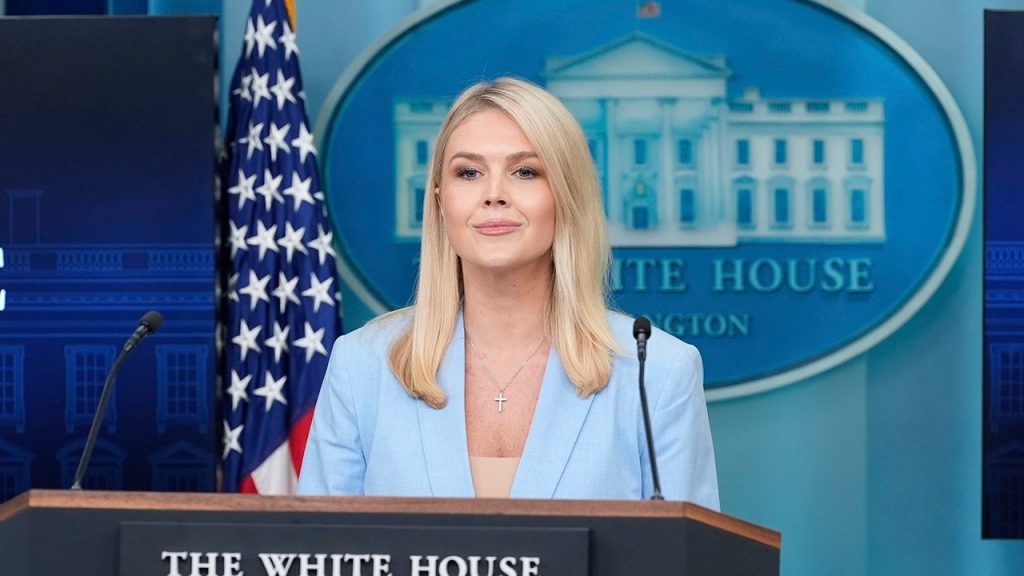In a recent announcement, President Donald Trump reiterated his commitment to maintaining a “10% baseline tariff” on imports from all countries, despite unveiling a new trade deal with the United Kingdom. During a press briefing, White House Press Secretary Karoline Leavitt confirmed that this tariff will remain in place even after the details of agreements are finalized. The President characterized the new trade agreement with the U.K. as a significant step forward, highlighting its potential to streamline American exports.
| Article Subheadings |
|---|
| 1) President Trump’s Tariff Policy Explained |
| 2) Trade Deal with the United Kingdom: Key Highlights |
| 3) Implications of Tariffs on U.S.-U.K. Trade Relations |
| 4) Historical Context of U.S. Trade Policies |
| 5) The Future of Tariffs in International Trade |
President Trump’s Tariff Policy Explained
President Donald Trump’s administration has been characterized by his unyielding stance on tariffs, aimed primarily at protecting U.S. industries from foreign competition. The “10% baseline tariff” he has proposed is not merely an arbitrary figure; it symbolizes a strategic approach to international trade that seeks to leverage the U.S.’s negotiating power. The administration asserts that this tariff will apply universally, affecting all trading partners, and will persist even after existing trade agreements are finalized. White House Press Secretary Karoline Leavitt emphasized that this approach is a fundamental principle of Trump’s economic policy, ensuring that no country can unfairly benefit from trade with the U.S. without adhering to American standards of reciprocity.
Trade Deal with the United Kingdom: Key Highlights
In a significant diplomatic move, President Trump recently announced a new trade agreement with the United Kingdom, which he described as “an incredible day for America.” This agreement marks the first in a series of discussions that the Trump administration has held over the past month to establish trade relations with the U.K. Some key highlights include commitments from the U.K. to fast-track American goods through customs, thereby accelerating the approval process for imports. Trump noted that these negotiations are indicative of a broader strategy to ensure that fairness and reciprocity are central tenets of international trade, thereby linking trade practices directly to America’s economic interests.
Implications of Tariffs on U.S.-U.K. Trade Relations
The introduction of a 10% streamlining tariff will have profound implications for U.S.-U.K. trade relations. Prior to this policy, the U.S. had imposed a standard tariff rate of 0 to 2.5% on most U.K. imports, while the U.K. had often reciprocated under the World Trade Organization’s “Most Favored Nation” principles. With the introduction of Trump’s tariffs, the landscape has shifted considerably. The 10% tariff will affect various sectors, including manufacturers and service providers who previously enjoyed low tariff rates. The ongoing effects could lead to increased costs for consumers and businesses alike, as these tariffs generally escalate the prices of imported goods.
Historical Context of U.S. Trade Policies
In assessing the current climate of U.S. trade policy, it is crucial to explore the historical context of tariffs and their role in U.S. economic development. Tariffs have been used from as far back as the founding of the nation—initially as a means to protect fledgling U.S. industries from European competition. Over the decades, these policies have evolved, influenced by periods of economic upheaval and globalization. The Trump administration’s reversion to protectionist policies reflects a fundamental shift away from decades of free trade advocacy, driven by the belief that past approaches may have harmed U.S. industries more than they benefited productivity and employment.
The Future of Tariffs in International Trade
Looking to the future, the persistence of tariffs, particularly the 10% baseline tariff, raises several questions about the trajectory of international trade. As economies around the world become increasingly interdependent, the challenge will be striking a balance between protective measures and fostering cooperative trade relations. Analysts speculate that the steadfast implementation of tariffs could spark retaliatory measures from trading partners, disrupting established economic ties and potentially leading to a trade war. The administration must navigate these complexities carefully, as the effects of protectionist policies are often far-reaching, affecting not only the sectors directly involved but also the broader economic landscape.
| No. | Key Points |
|---|---|
| 1 | President Trump maintains a 10% baseline tariff on imports from all countries, despite new trade deals. |
| 2 | The recent U.K. trade deal emphasizes the principles of reciprocity and fairness. |
| 3 | Historically, tariffs in the U.S. have been employed as a protectionist measure. |
| 4 | The U.S. has introduced a 10% tariff, altering long-standing tariff structures with the U.K. |
| 5 | Future international relations may face complexities due to potential retaliatory trade measures. |
Summary
In conclusion, President Trump’s commitment to a 10% baseline tariff represents a significant shift in U.S. trade policy, aiming to redefine international relations with key partners like the U.K. The newly announced trade agreement illustrates the administration’s focus on fairness and reciprocity in trade, though the implications of these tariffs could lead to increased costs and potential retaliatory actions. As the world grapples with interconnected economies, navigating these complexities will be critical for sustaining both domestic industries and international trade relations.
Frequently Asked Questions
Question: What is the purpose of the 10% baseline tariff?
The 10% baseline tariff aims to protect U.S. industries by imposing a standard tax on all imports, ensuring that foreign competitors abide by similar standards as American businesses.
Question: How does the new trade deal with the U.K. benefit American businesses?
The new trade deal includes provisions for faster customs processing for American goods, thereby accelerating the approval process and making it easier for U.S. businesses to export their products to the U.K.
Question: What historical role have tariffs played in U.S. economic policy?
Tariffs have historically been used to protect emerging U.S. industries from foreign competition, shaping the economic landscape and reflecting the country’s evolving stance on international trade.


